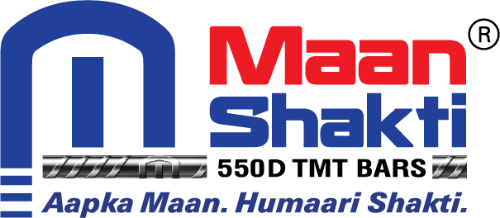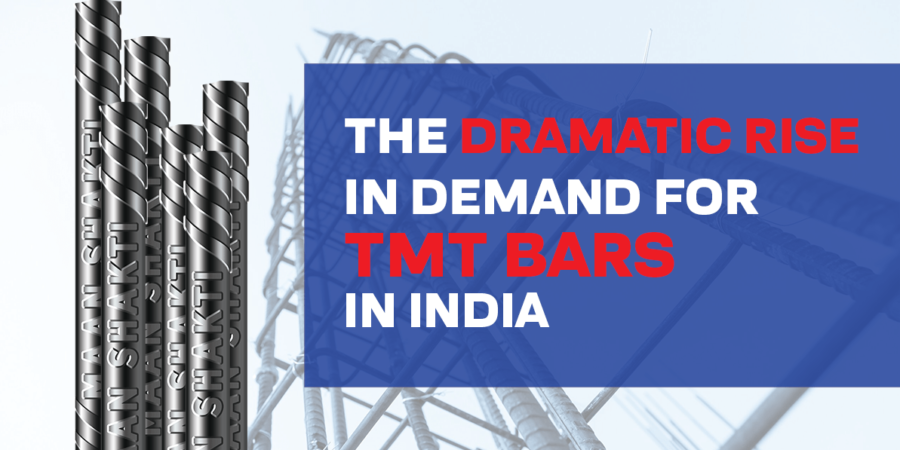The advent of TMT steel bars marked a significant turning point in the Indian construction industry’s history. Before the 1960s, traditional round plain steel was the reigning choice for construction. However, in the 1970s, it was dethroned by TOR steel, which held sway until the 1990s. It was during the late 1990s that TMT steel and corrosion-resistant steel entered the scene, revolutionizing the landscape of RCC (Reinforced Cement Concrete) structures by making them more resilient and durable.
So, what sets TMT bars apart and allows them to conquer the construction industry?
Attributes of TMT Bars
Optimized Carbon Content: TMT bars limit their carbon content to 0.2%, striking a balance between weldability and strength. Ordinary electrodes can easily weld joints without the need for additional precautions.
Exceptional Ductility: TMT bars possess remarkable ductility due to their tough exteriors and soft interiors. This property makes them suitable for a wide range of construction applications.
Triple Benefits: TMT bars excel in three critical areas: strength, weldability, and ductility, making them both cost-effective and safe to use. Additionally, their corrosion resistance is a significant advantage achieved through the cooling process, which prevents the formation of coarse carbide. The presence of soft ferrite pearlite enhances their resistance to seismic loading.
Variety of Grades and Sizes: TMT bars are typically available in grades such as Fe-415, Fe-500, Fe-550, Fe 500D, Fe 550D, and various diameters ranging from 8 to 40 millimeters. Standard lengths vary from 5.5 to 13 meters.
TMT Bars in the Indian Market
The Indian iron and steel industry has played a vital role in the socio-economic development of the country. India ranks seventh globally as a producer of crude steel. This industry has experienced its share of business cycles, marked by ups and downs. Currently, it stands on the brink of significant change as it strives to meet ambitious standards.
Secondary producers in the Indian steel industry are collaborating with major players, contributing to capacity, production, and commodity variety. While secondary producers initially had a modest presence in the post-liberalization era, they have gradually shaped the domestic steel and iron industry.
The introduction of the Industrial Policy Resolution of 1956 spurred steel production in India. Public sector enterprises like SAIL (Steel Authority of India Limited) established plants in the late 1950s and early 1970s, alongside VISL (Vijayanagar Steel Limited), TISCO (Tata Iron and Steel Company), and IISCO (Indian Iron and Steel Company, now part of SAIL). These entities were the primary integrated steel producers until the 1980s, when RINL (Rashtriya Ispat Nigam Limited) joined the ranks.
During the 1970s, there was a growing demand for the secondary sector, especially smaller-scale steel producers employing methods like induction furnaces and electric arc furnaces using scrap and DRI (Direct Reduced Iron). These producers contributed to the production of semi-finished billets and ingots, leading to the emergence of numerous re-rolling units. These units transformed semi-finished steel into rods and TMT bars, primarily for use in the construction industry.
Despite facing challenges related to energy consumption and pricing, the re-rolling sector holds promise for future growth, driven by the rapid pace of construction and infrastructure development.
Furthermore, foreign steel plants are increasingly establishing their presence in India, gearing up for ambitious projects. This reflects the growing dominance of the Indian iron and steel industry. The continuous growth of the Indian economy, driven by the steel sector, has spurred infrastructure development, guaranteeing a sustained demand for TMT bar.
TMT bars have thus become indispensable in the construction industry, playing a pivotal role in shaping India’s infrastructure. The industry’s dynamic evolution, driven by innovation and collaboration, promises a bright future for both steel producers and the nation’s development. The leading TMT Bar producer of the Indian market are paving the way for a bright future for the country.


